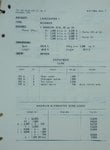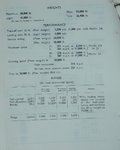- Thread starter
- #141
wuzak
Captain
One statistic to be drawn from those figures,relevant for anyone planning a strategic bombing campaign, is that a Lancaster dropped nearly six times the tonnage of bombs per sortie that a Mosquito did.
And that is particularly important if the main type of bombing is to be area bombing.


